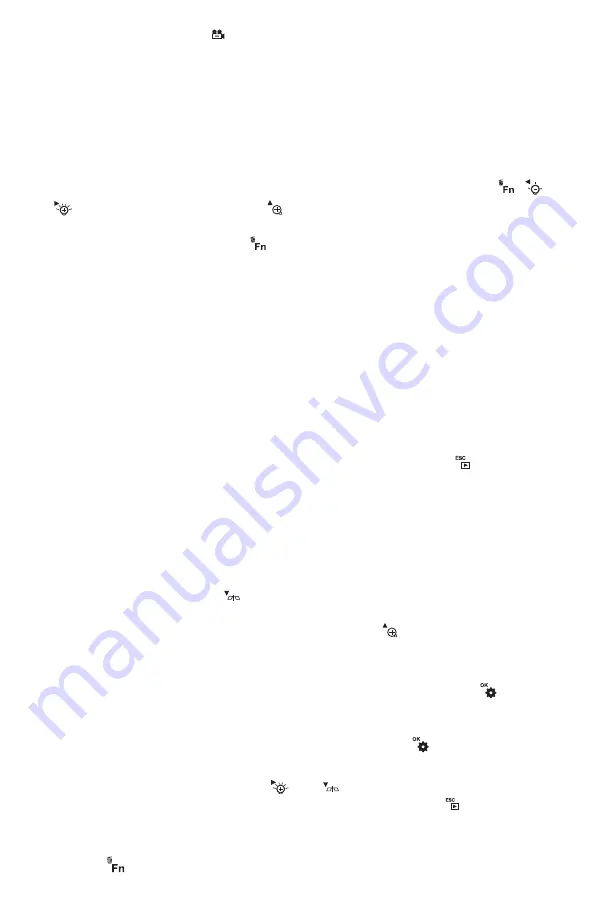
To stop recording
, press the
button again. This causes the red running clock to
disappear and returns the DCS1700 to Preview mode. As the clip is ended, its file name
is briefly displayed in red at the bottom of the screen to confirm that the clip was stored.
Like photo files, video files begin with the letter PICT; unlike photo files, video files have
the suffix “.AVI”.
In the DCS1700, files are named consecutively, regardless of type. For example, if you
first take a picture and then record a video, the first file would be named PICT0001.JPG
and the second PICT0002.AVI.
While a video is being recorded, the following console buttons remain active:
,
and
(brightness up and down), and
(zoom). The effects of changing brightness
and zoom level are reflected in the video recording. So are the effects of changing
brightness and contrast through the
button (see the Navigating the Two Menus
section of this manual for details). You cannot pause the recording of a video clip and
resume it later; to cover two time spans, you must record two videos.
The DCS1700 will be unable to store videos and pictures if its SD memory card is full,
write-protected or damaged. When the instrument senses any of these conditions, it will
superimpose the words
SD CARD FULL
at the bottom of the screen in red. To remedy
the situation, either replace the full SD card by another card with spare capacity, or
delete files individually or in bulk. Instructions for deleting files can be found later in this
user’s manual.
VIEWING SAVED PHOTOS AND VIDEOS
To view a picture or play back a video
on the DCS1700’s LCD or a TV monitor, switch
the unit out of Preview mode and into Playback mode by pressing the
button. The
DCS1700 will then recall and display either a still photo (if a photo was the last
recording stored) or the first frame of a video clip (if a video was the last recording). In
both cases, two pieces of information about the file will be displayed briefly: its name (in
red at the bottom of the LCD) and its position in the recording sequence (for example,
16/16) in white in the upper right corner of the LCD. For video clips, another piece of
information will also be shown: its duration, in the upper left corner of the LCD.
In Playback mode, pressing the
button repeatedly sequentially recalls all photos and
videos from memory in the
reverse
order in which they were stored (in other words, the
newest first and the oldest last). By contrast, pressing the
button repeatedly
sequentially recalls all stored photos and videos from memory in the
same
order in
which they were stored (the oldest first and the newest last).
To begin playing back a video
whose first frame is on-screen, press the
button.
Once a video clip begins playing, a running clock and moving timeline will help you
relate what you see now against what you saw when you recorded the clip. You can
pause and resume the clip as often as you like by pressing the
button to toggle
between the two actions.
During video playback, you can use the
and
buttons to speed up or slow down
playback; see Table 1 for the specific speeds available. Pressing the
button during
playback stops the video and cues it up to its first frame, ready to be restarted.
Whenever a photo or (the first frame of) a video clip is on-screen in Playback mode,
pressing the
button gives you the opportunity to delete it from the SD card.
User Guide
User Guide
User Guide
User Guide
User Guide
User Guide
User Guide
User Guide
User Guide
User Guide
User Guide
User Guide
User Guide
User Guide
User Guide
15




























